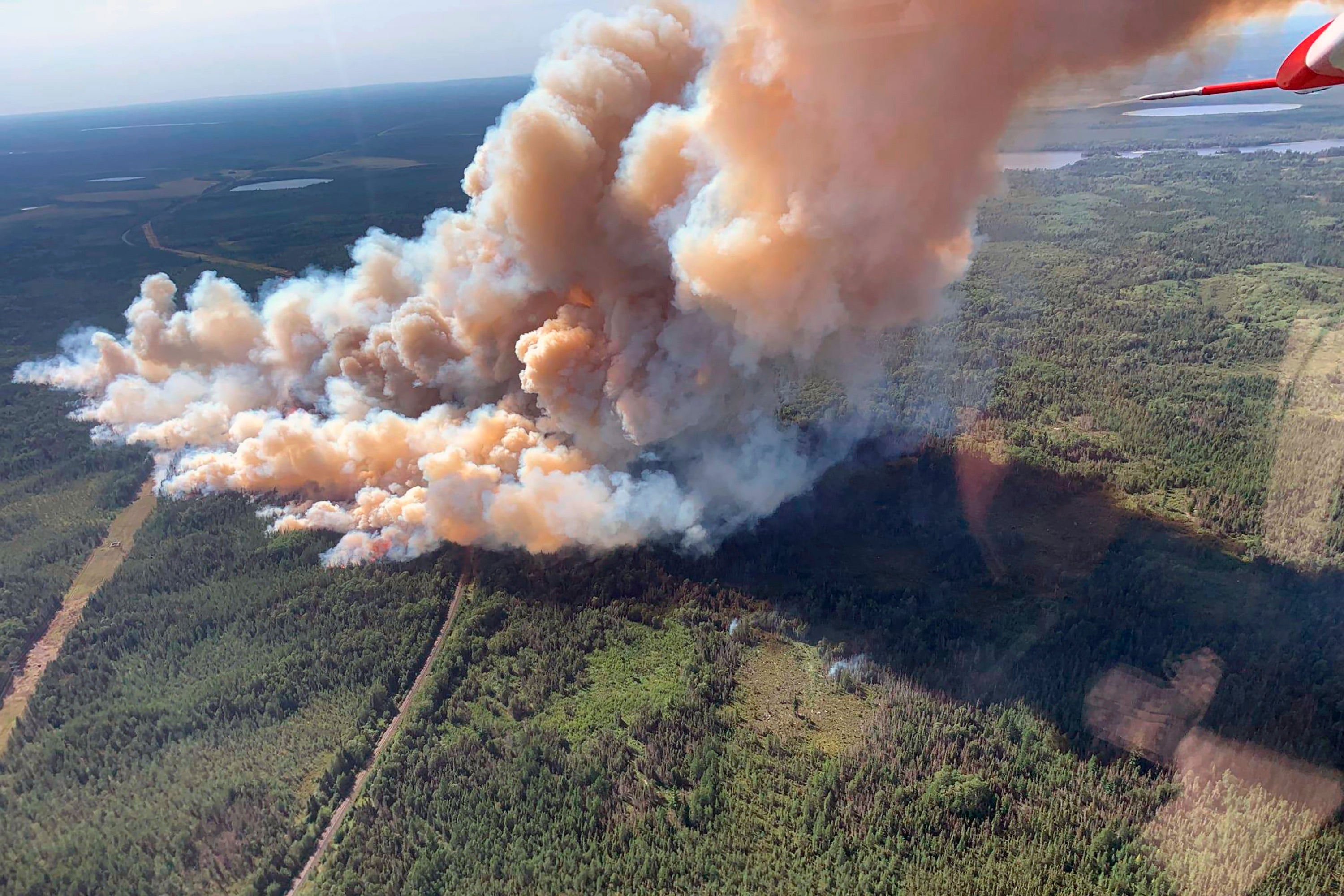Wildfire in northeastern Minnesota grows to 1,500 acres
A rapidly growing wildfire in northeastern Minnesota has expanded to at least 1,500 acres and prompted some evacuations

Your support helps us to tell the story
From reproductive rights to climate change to Big Tech, The Independent is on the ground when the story is developing. Whether it's investigating the financials of Elon Musk's pro-Trump PAC or producing our latest documentary, 'The A Word', which shines a light on the American women fighting for reproductive rights, we know how important it is to parse out the facts from the messaging.
At such a critical moment in US history, we need reporters on the ground. Your donation allows us to keep sending journalists to speak to both sides of the story.
The Independent is trusted by Americans across the entire political spectrum. And unlike many other quality news outlets, we choose not to lock Americans out of our reporting and analysis with paywalls. We believe quality journalism should be available to everyone, paid for by those who can afford it.
Your support makes all the difference.A rapidly growing wildfire in northeastern Minnesota has expanded to at least 1,500 acres (600 hectares) and prompted some evacuations, the U.S. Forest Service said Monday.
The fire was spotted around 3 p.m. Sunday near Greenwood Lake, about 15 miles (24 kilometers) southwest of Isabella, in the Superior National Forest.
“It's just changing very rapidly and extremely quickly," said Joanna Gilkeson, spokeswoman for the Superior National Forest. “It's very active today with the near-critical fire weather.”
Gov. Tim Walz on Sunday night authorized the Minnesota National Guard to assist in the firefighting efforts, with fire dangers expected to remain high over the next several days.
“This summer, Minnesota has experienced abnormally high temperatures and a historic drought resulting in dry conditions conducive to wildfires,” Walz said in a statement.
Superior National Forest officials said in a statement that the cause of the Greenwood Lake fire had not determined by Monday afternoon. Aircraft flew over the area Monday morning to get a better estimate of the size. Crews were fighting the fire on the ground and from the air. They said the fire was expected to continue spreading northward Monday due to southerly winds gusting to 20 to 25 miles per hour (32 to 40 kilometers per hour), temperatures around 85 F (29 C) and low humidity.
Byron Boler, a co-owner of Snowshoe Country Lodge on Sand Lake, told WTIP-FM in Grand Marais that he was doing outdoors chores Sunday afternoon when he spotted a “big cloud of smoke billowing up” about a quarter mile southeast of his property and reported it. He said planes were soon scooping up water from nearby lakes and dumping it on the fire.
“If the wind would have turned at all, we would have lost a lot of land,” he said. The lodge remained open.
Authorities ordered cabin and property owners in the area just to the north around McDougal Lake to evacuate Monday and closed nearby recreation areas, campgrounds and boat launches. There were reports of extensive ash and smoke along Minnesota Highway 1, which connects Ely with Lake Superior Authorities did not immediately return a call seeking information on the number of people evacuated from the sparsely populated area about 35 miles (56 kilometers) north of Two Harbors.
The smoke prompted the Minnesota Pollution Control Agency to issue an air quality alert for the inland portion of Lake County. The MPCA said southerly winds were expected over the region for the next few days and would transport the smoke plume north.
The Superior National Forest is also monitoring two new, lightning-caused fires that are burning in remote parts of the Boundary Waters Canoe Area Wilderness to the northeast. A fire west of Sawbill Lake had grown to 10 acres (4 hectares), while another south of Little Saganaga Lake was around 2 acres (0.8 hectares). Aircraft were dropping water to try to limit their spread.
Drought conditions from the western U.S. across the northern plains to Minnesota have raised wildfire risks across a broad swath of the country. Firefighters battling the huge Dixie Fire in Northern California forests girded Monday for more windy weather. Growing explosively at times, the Dixie Fire has scorched 890 square miles (2,300 square kilometers) and destroyed more than 1,100 buildings, including 625 homes, since mid-July.
There were nearly 100 large, active wildfires burning in the U.S. on Monday, the National Interagency Fire Center said. More than 25,000 firefighters, support personnel and management teams were fighting them. The Forest Service said last week it's in crisis mode, with more than double the number of firefighters deployed than at the same time a year ago.